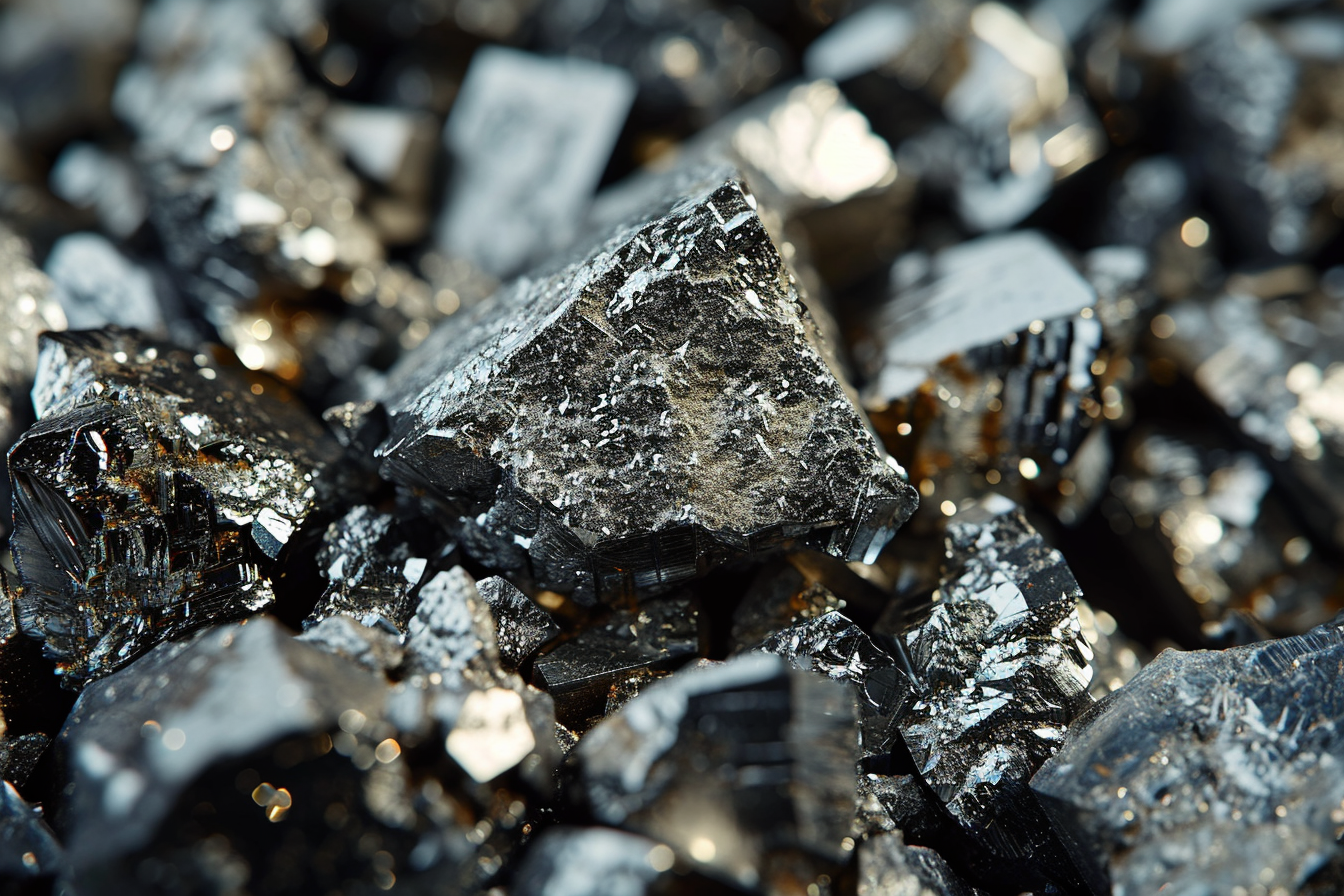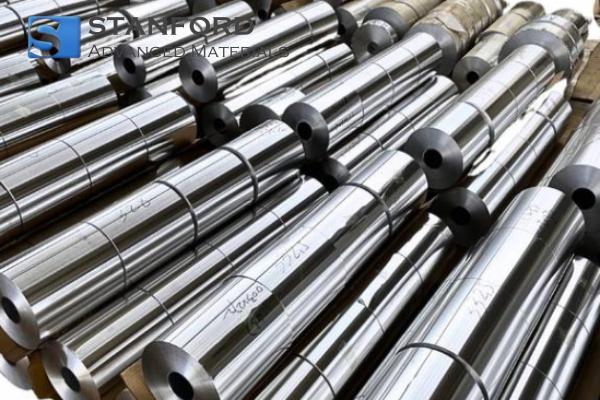Are Rare Earth Metals Important?
1. Introduction
Rare earth metals, a group comprising 17 elements – 15 lanthanides, scandium and yttrium – have long been associated with misconceptions and inaccurate interpretations. This article defines rare earth metals, refutes the misconception of scarcity and examines their roles across various sectors.
Definition of Rare Earth Metals According to IUPAC
The International Union of Pure and Applied Chemistry (IUPAC) categorises rare earth metals as the 15 lanthanides together with scandium and yttrium. This definition forms the foundation for understanding their chemical properties and industrial applications.
Refutation of the Scarcity Myth
Contrary to popular belief, rare earth metals are not scarce in absolute terms. They occur in the Earth’s crust in measurable quantities. Their extraction is challenging given their wide dispersion and complex geochemical behaviour; hence, it is necessary to clarify the misconception regarding their scarcity.
Importance of Rare Earth Metals in Various Industries
The role of rare earth metals extends beyond the consideration of their availability. They contribute to developments in technology, energy and defence. Detailed evaluation of their applications – from high-tech instruments to national defence systems – illustrates their functional role in modern industry.
In this analysis we will examine their distribution, applications and influence on global industry. Are rare earth metals significant? We shall delineate the roles they fulfil in shaping contemporary systems.
2. The Ubiquity of Rare Earth Metals
Although rare earth metals are often regarded as difficult to isolate, they are widely dispersed throughout the Earth’s crust in varying concentrations. An understanding of their distribution, geochemical properties and the roles of the 17 constituent elements is essential for assessing their occurrence and relevance.

Occurrence in the Earth’s Crust
Contrary to their designation, rare earth metals are not rare in the Earth’s crust. They are found globally in measurable amounts, with certain regions exhibiting higher concentrations. The principal challenge lies in their widespread dispersion, which complicates extraction.
Geochemical Properties Leading to Dispersion
The geochemical characteristics of rare earth metals contribute to their wide dispersion. Unlike some elements that occur in concentrated deposits, rare earth metals tend to be diffusely distributed and often coexist with other minerals. This dispersion is attributable to their similar chemical behaviour, which complicates extraction processes.
Explanation of the 17 Elements
To understand the ubiquity of rare earth metals, it is necessary to consider the classification of the 17 elements that constitute this group. The lanthanides, from cerium to lutetium, provide the core of this classification. Additionally, scandium and yttrium possess chemical properties that contribute to the overall profile of this group.
It is essential to examine the individual characteristics of each element to understand their applications. For instance, neodymium exhibits magnetic properties that enhance certain technical components, while europium provides properties necessary for luminescence in display technologies. In the following sections, we examine the industrial uses of rare earth metals and outline their roles in high-technology devices, electronic systems and defence applications.
3. Industrial Applications
Rare earth metals form the technical basis of many modern systems. Their applications span multiple sectors, including high-tech devices and military systems, thereby forming a crucial part of contemporary infrastructure.
High-Tech Devices and Military Technology
Rare earth metals are used in the production of specialised components for both high-tech devices and military equipment. Their chemical attributes contribute to the development of materials required in advanced apparatus.
Electronic and Electrical Fields
Rechargeable Batteries
Rare earth metals, notably lanthanum, cerium and neodymium, play a significant role in the manufacture of rechargeable batteries. These batteries power electric vehicles and portable electronic devices, relying on the high energy density and stability provided by these elements.
Computer Memory
In computer engineering, rare earth metals are employed in the production of memory devices. Neodymium’s magnetic properties are utilised to enhance the performance of certain storage components.
Mobile Phones
The functionality of mobile phones depends partially on rare earth metals. Europium is used for display phosphors, while neodymium is incorporated into compact speaker magnets.
DVDs
Europium and terbium contribute to the manufacture of phosphors in DVDs, ensuring accurate colour reproduction.

Magnets
Neodymium is used in the production of high-performance magnets. Such magnets are applied in electric motors and various electronic devices.
Automotive Exhaust Catalysts
Rare earth metals, particularly cerium, are incorporated into vehicle catalysts to reduce harmful emissions, thereby contributing to environmental protection.
Globally Increasing Demand for Electronic Devices
Impact on the Supply of Rare Earth Metals
The rising global demand for electronic devices directly influences the supply of rare earth metals. As consumption increases, it is essential to ensure stable sourcing of these elements.
Requirement to Meet Demand Across Various Sectors
In addition to consumer electronics, rare earth metals are indispensable in sectors such as aerospace, healthcare and renewable energy. Thus, meeting the demand in these areas is critical for sustained technological development.
Examination of the industrial applications of rare earth metals demonstrates that these elements serve as essential components in modern systems. Given that demand is steadily rising, detailed study of extraction methods, supply logistics and sustainable practices is necessary.
4. Diverse Industrial Uses
Rare earth metals, although primarily associated with electronics and high-technology devices, play a significant role in a range of industries. Their specific properties make them indispensable in applications that span from refining processes to the production of permanent magnets.
Petroleum Refining
In petroleum refining, rare earth metals – particularly cerium compounds – are used as catalysts. Cerium-based catalysts can increase reaction efficiency and reduce pollutant emissions.
Glass Polishing
Rare earth metals are also employed in precision optics and glass manufacturing. Lanthanum oxide is used in polishing processes, contributing to the production of optical components that meet strict clarity standards.

Chemical Catalysts
Rare earth metals serve as catalysts in various chemical processes. Their capacity to facilitate reactions at lower temperatures and with greater efficiency makes them valuable in the manufacture of chemicals, pharmaceuticals and other compounds.
Metallurgy
In metallurgy, rare earth metals are added to base metals to improve durability and heat resistance. They are employed as alloying agents to enhance material performance.
Catalytic Converters
In vehicle catalytic converters, rare earth metals convert harmful substances into less harmful compounds, thereby reducing emissions.
Production of Permanent Magnets
The production of permanent magnets relies on the inclusion of rare earth metals. Magnet types such as neodymium and samarium-cobalt contain these elements and are used in various mechanical and electrical systems.
Televisions and Monitors
Rare earth metals, such as europium, are utilised in the manufacture of phosphors for televisions and monitors to ensure accurate display performance.
The diversity of industrial uses confirms that rare earth metals impact multiple sectors. Their use in processes from petroleum refining to emissions control underscores their significance in modern industry.
5. Specialised Applications
Beyond their conventional use in electronics and metallurgy, rare earth metals are applied in specialised industrial processes that require precision, clarity and environmental consideration.
Importance in Industries Using Phosphors, Catalysts and Polishing Agents
Phosphors:
Rare earth metals, particularly europium and terbium, are required for the production of phosphors. These phosphors are used in applications that require illuminated displays, such as televisions, monitors and electronic signboards, providing accurate colour reproduction.
Catalysts:
The catalytic properties of rare earth metals render them beneficial in various industrial chemical reactions. They facilitate processes in the manufacture of fuels, chemicals and pharmaceuticals, thereby increasing process efficiency.
Polishing Compounds:
Lanthanum oxide, an oxide derived from rare earth metals, is used in the production of polishing compounds. These compounds are applied in the manufacture of optical lenses, precision instruments and glass components to achieve stringent surface quality.
Use in Luminous Screens and Optical Quality Glass
Luminous Screens:
Rare earth metals, such as europium and terbium, contribute to the manufacture of luminous screens. The phosphors containing these elements emit light when exposed to electrons, thereby producing accurate display colours. This technology is employed in televisions, computer monitors and electronic displays.
Optical Quality Glass:
Lanthanum oxide is used to enhance optical characteristics in high-quality glass. Such glass is essential for lenses, camera components and precision optics, ensuring minimal distortion and high clarity.
Applications for Air Purification
Catalytic Converters:
Rare earth metals, including cerium and lanthanum, are integral to catalytic converters in reducing air pollutants. They catalyse the conversion of harmful substances into less harmful compounds.
Phosphors for Air Purification:
Rare earth metals are also used in the manufacture of phosphors applied in air purification systems. These phosphors facilitate the breakdown of pollutants when exposed to ultraviolet light, thereby aiding in the mitigation of air contamination in industrial settings.
The application of rare earth metals in specialised industrial processes demonstrates their role in sectors that require precise operational control and environmental management.
6. Conclusion
Rare earth metals, despite being widely distributed in the Earth’s crust, serve as fundamental components in engineering, industry and environmental management. In conclusion, it is necessary to review their significance, advocate responsible practices for extraction and processing, and consider ongoing research into alternative technologies.
Summary of the Importance of Rare Earth Metals
In summary, rare earth metals are integral to modern technological systems. They support applications ranging from high-tech devices to defence systems. The myth of scarcity is refuted by recognising that the main challenge lies in their dispersion rather than in their abundance.
Call for Awareness and Sustainable Practices
This analysis underscores the need for enhanced awareness regarding the environmental impacts associated with the extraction of rare earth metals. Improvement in recycling practices and responsible sourcing are essential to reduce ecological disruption.
Future Perspectives and Research in Alternative Technologies
Ongoing research is investigating alternative extraction methods, improved recycling processes and environmentally sensitive practices to reduce the reliance on rare earth metals. Such research aims to establish a more sustainable framework for technology development.
In conclusion, rare earth metals facilitate progress across multiple technical fields. However, careful management of supply chains and environmental impacts remains imperative.

 Bars
Bars
 Beads & Spheres
Beads & Spheres
 Bolts & Nuts
Bolts & Nuts
 Crucibles
Crucibles
 Discs
Discs
 Fibers & Fabrics
Fibers & Fabrics
 Films
Films
 Flake
Flake
 Foams
Foams
 Foil
Foil
 Granules
Granules
 Honeycombs
Honeycombs
 Ink
Ink
 Laminate
Laminate
 Lumps
Lumps
 Meshes
Meshes
 Metallised Film
Metallised Film
 Plate
Plate
 Powders
Powders
 Rod
Rod
 Sheets
Sheets
 Single Crystals
Single Crystals
 Sputtering Target
Sputtering Target
 Tubes
Tubes
 Washer
Washer
 Wires
Wires
 Converters & Calculators
Converters & Calculators
 Write for Us
Write for Us


 Chin Trento
Chin Trento



